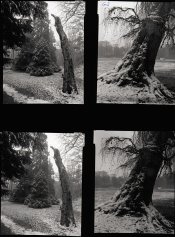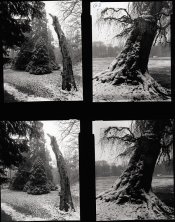36cm2
Member
I recently read an interesting post that noted that blue light is diffracted by air more easily than other colors. The post mentioned that Ansel Adams exploited this effect by using a blue filter to accentuate mist across distances in some of his landscapes.
Is this correct? E.g., if you are photographing a setting with thin fog, will the use of a blue filter accentuate the fog and increase its impact from foreground to background?
Thanks for any insight.
Leo
Is this correct? E.g., if you are photographing a setting with thin fog, will the use of a blue filter accentuate the fog and increase its impact from foreground to background?
Thanks for any insight.
Leo










 : "Americaine Nuit" I think it was called. The older B&W cowboy films often used the technique.
: "Americaine Nuit" I think it was called. The older B&W cowboy films often used the technique.







